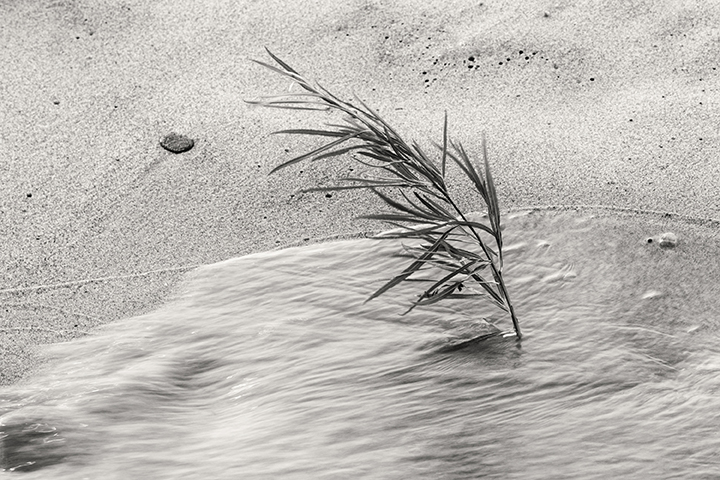
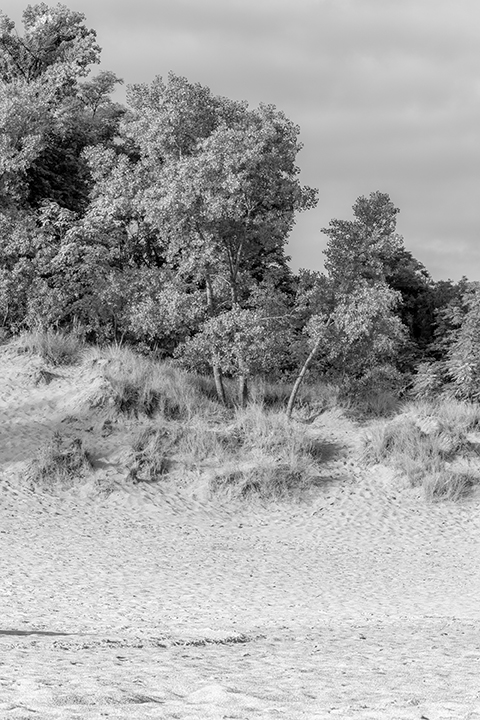
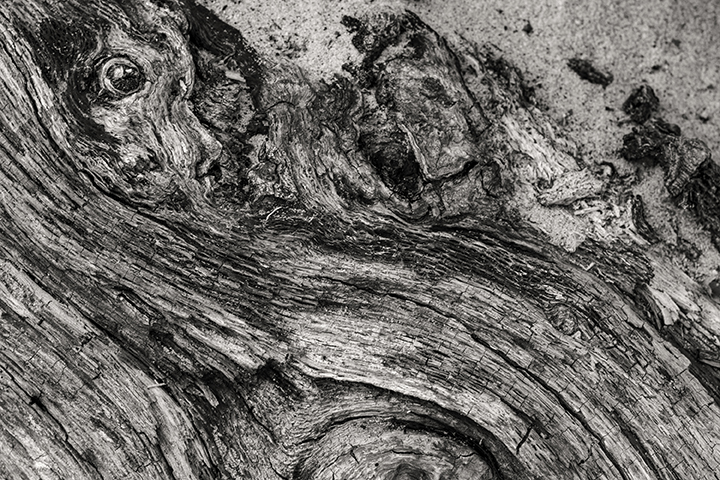
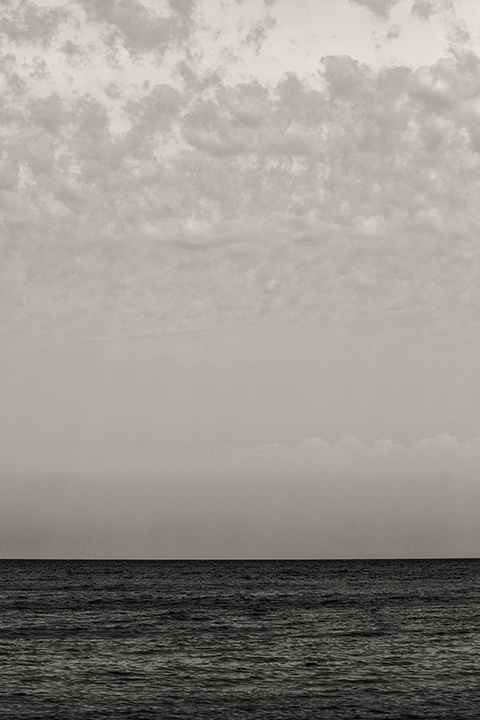

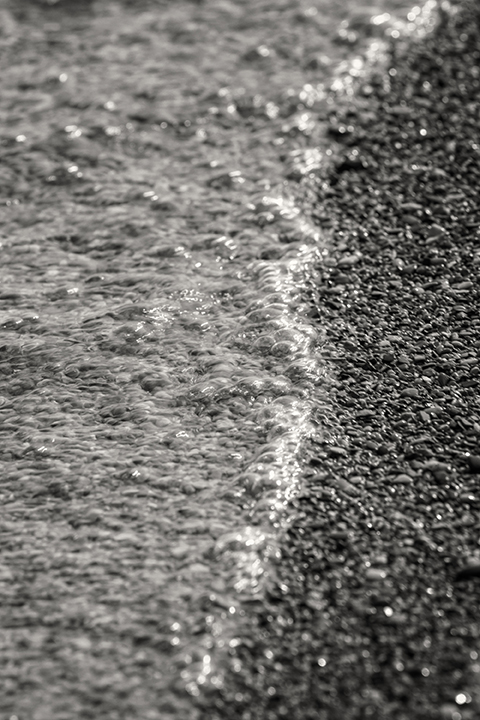
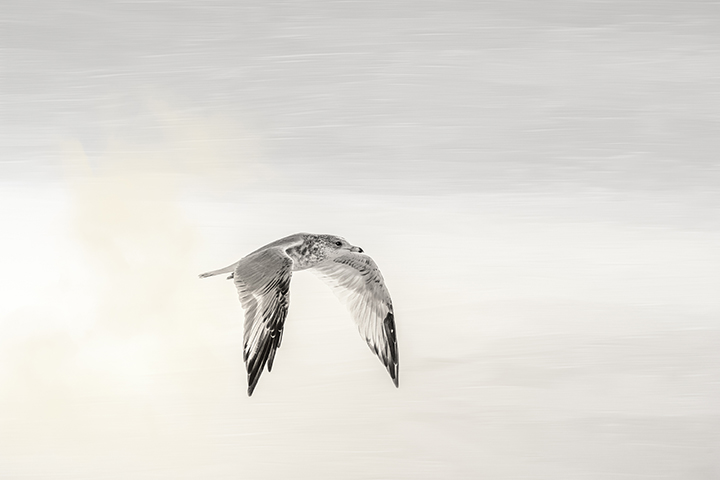
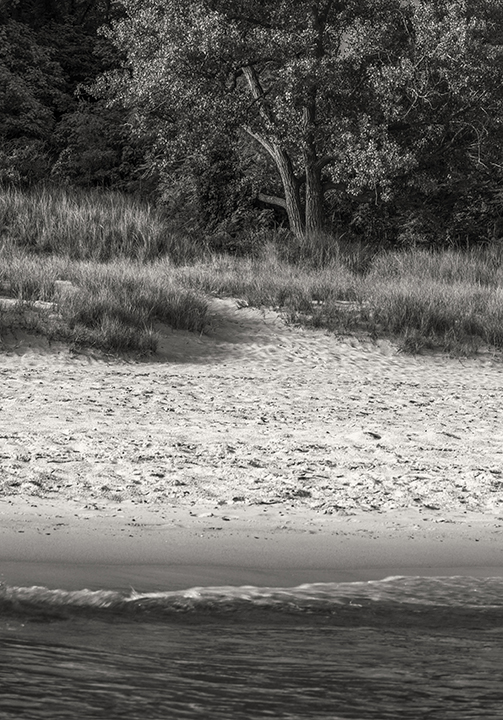
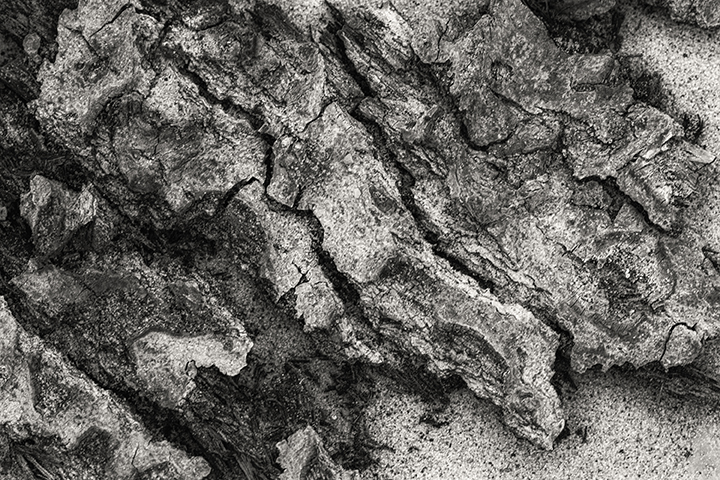
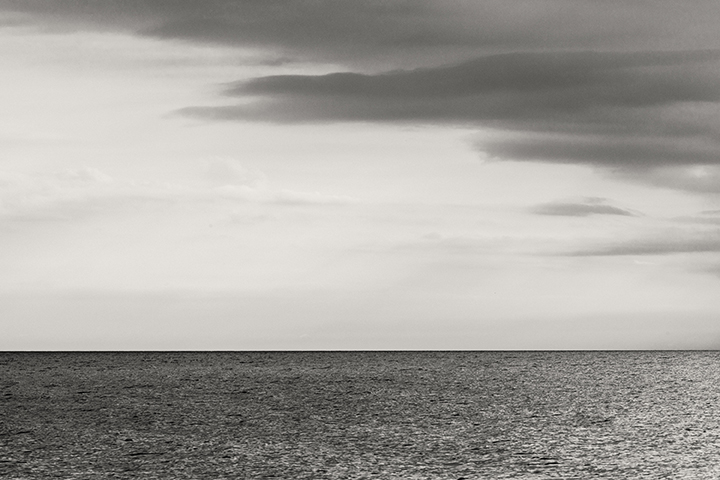
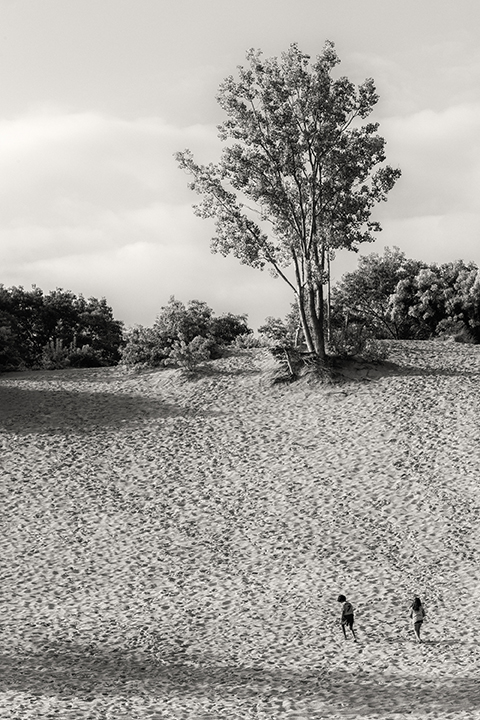
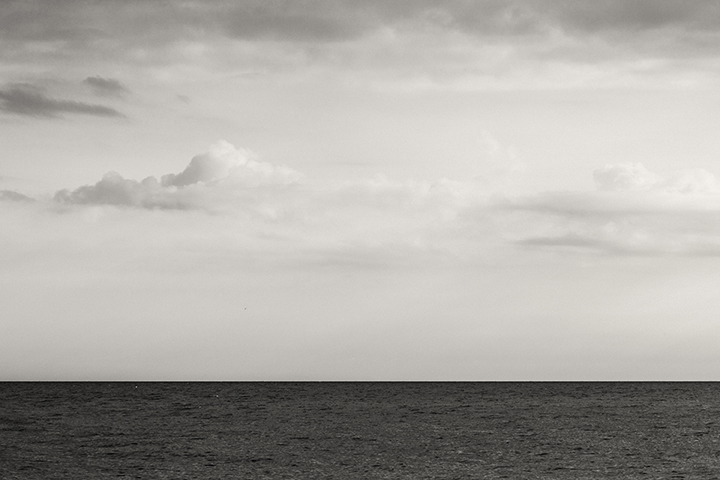
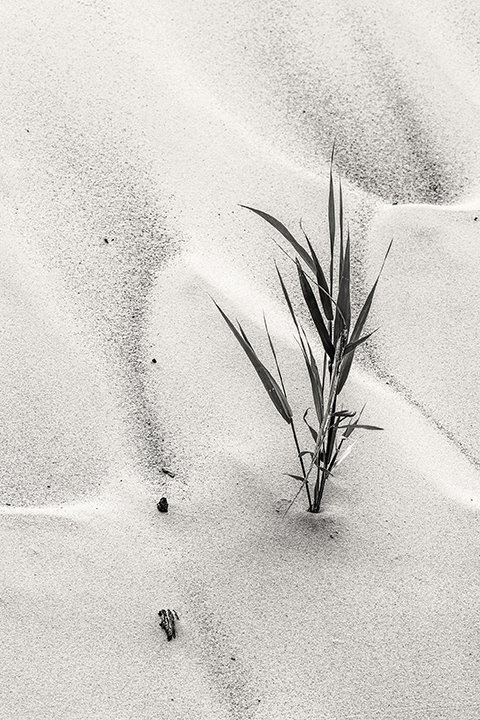
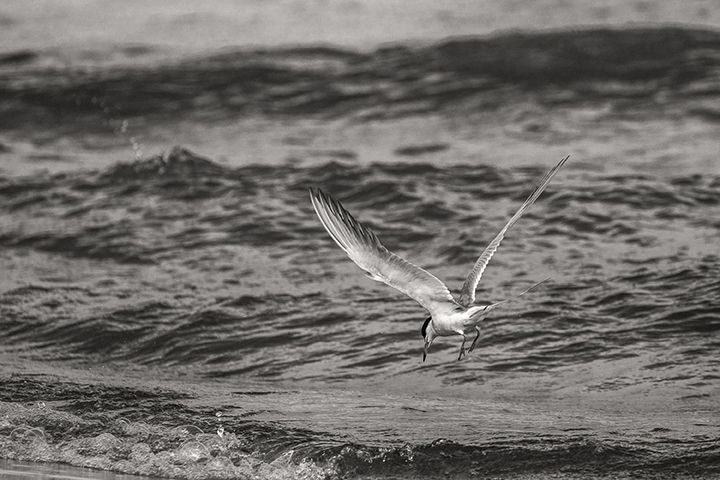
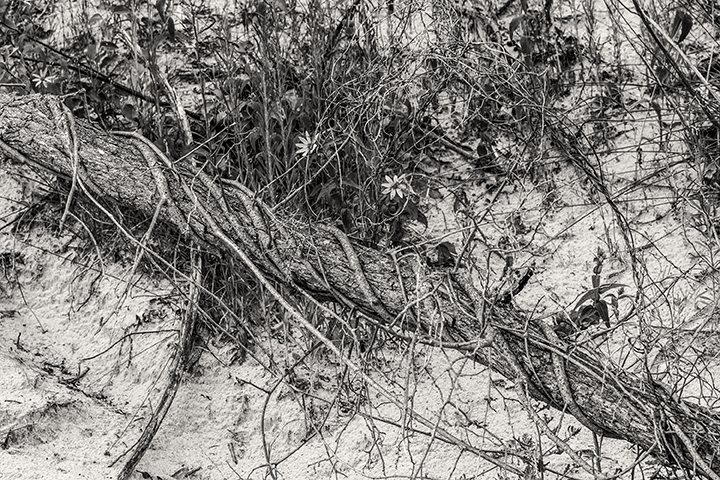
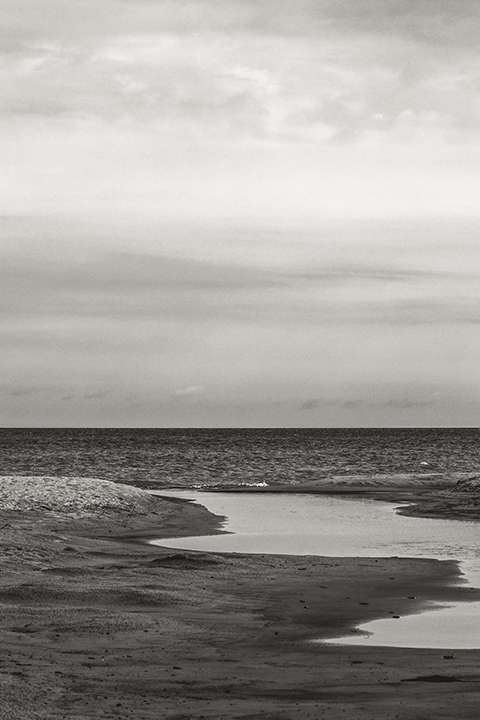
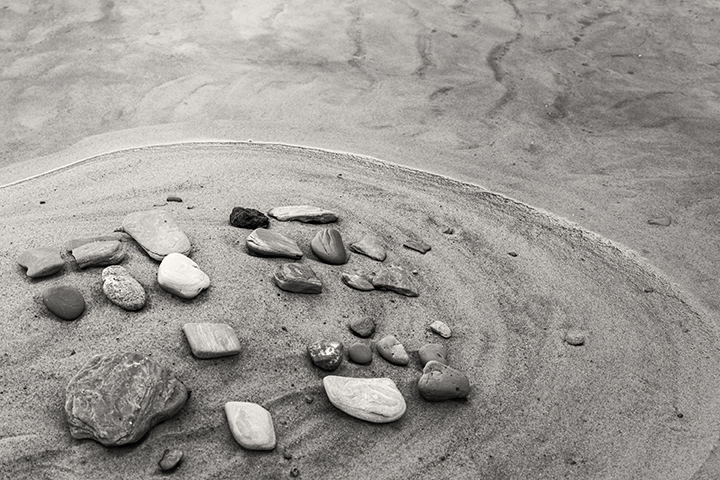

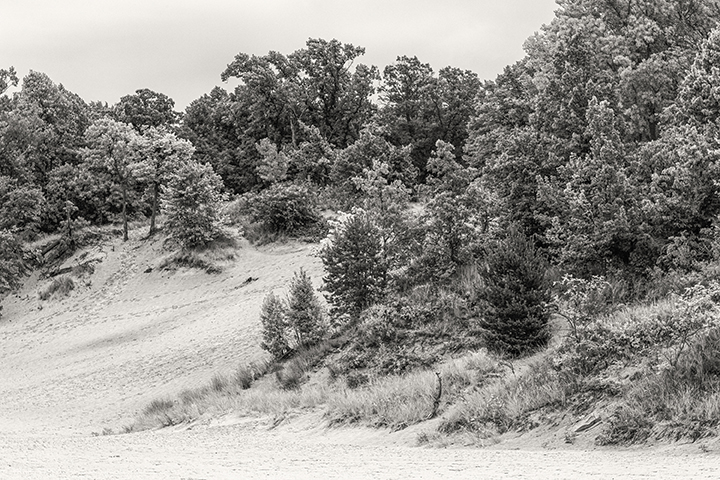
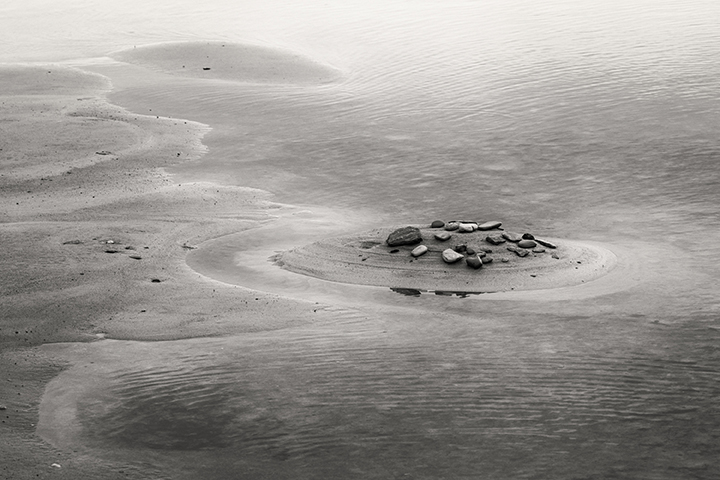













































































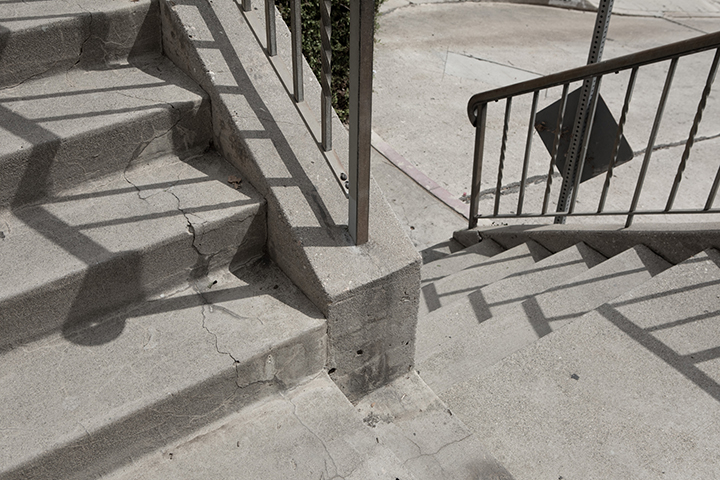
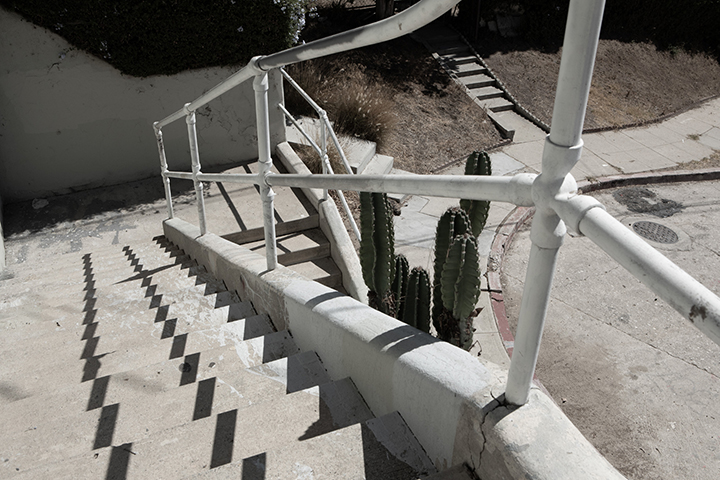
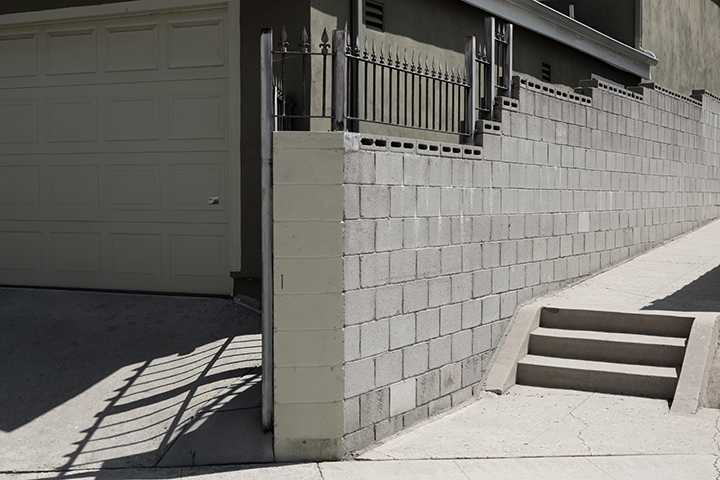
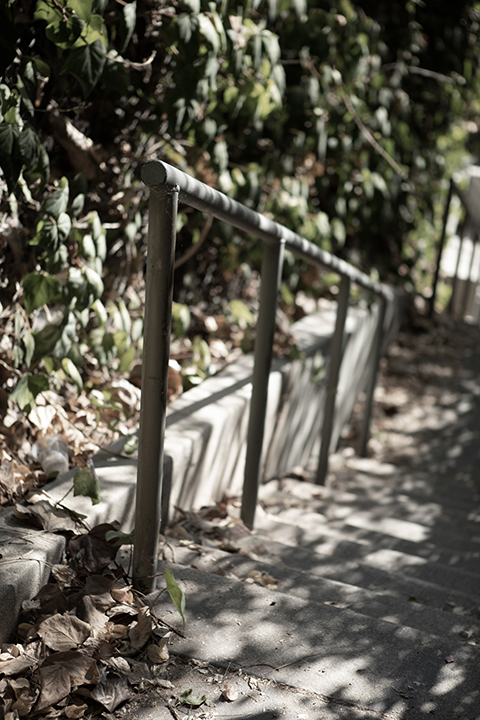
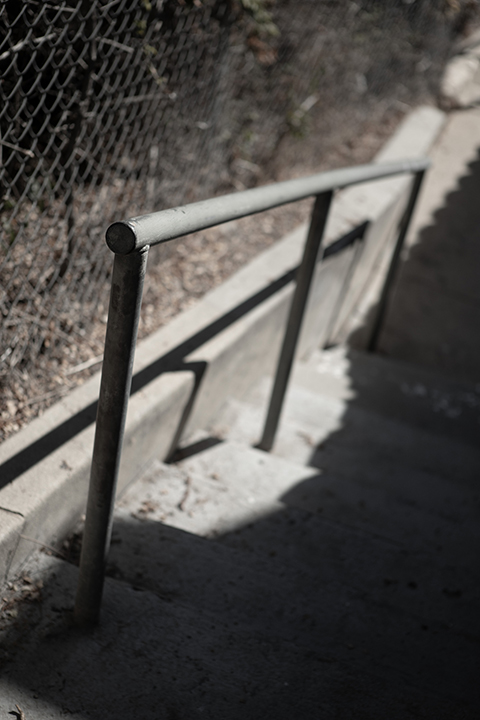
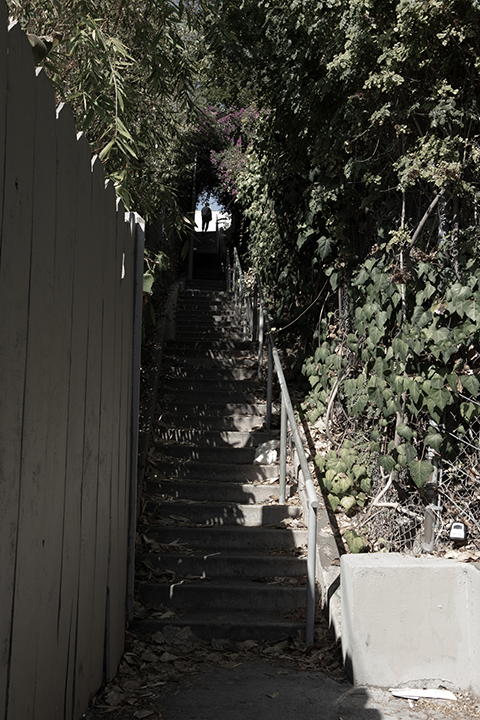

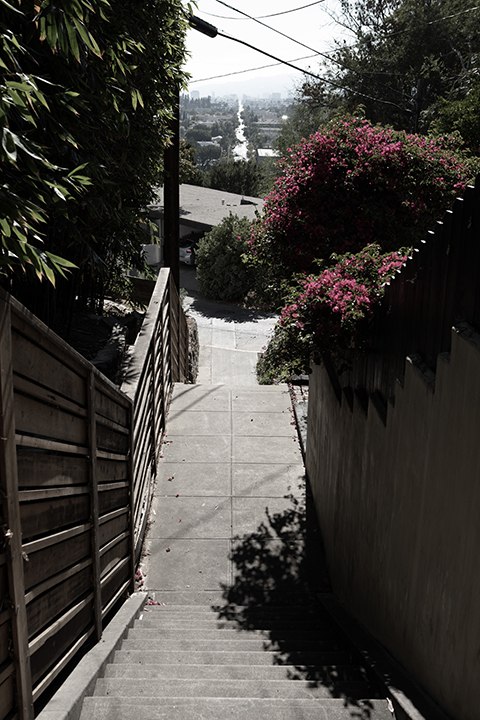
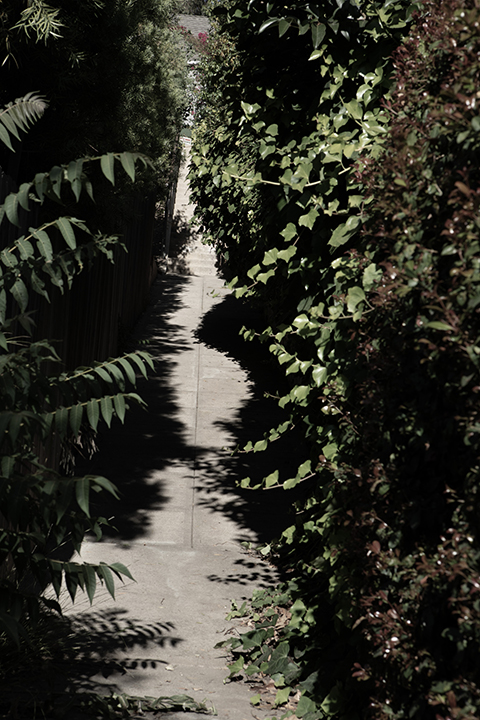
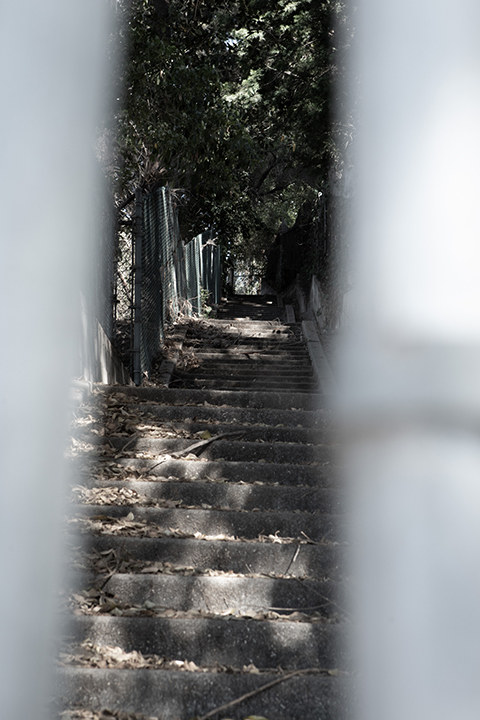
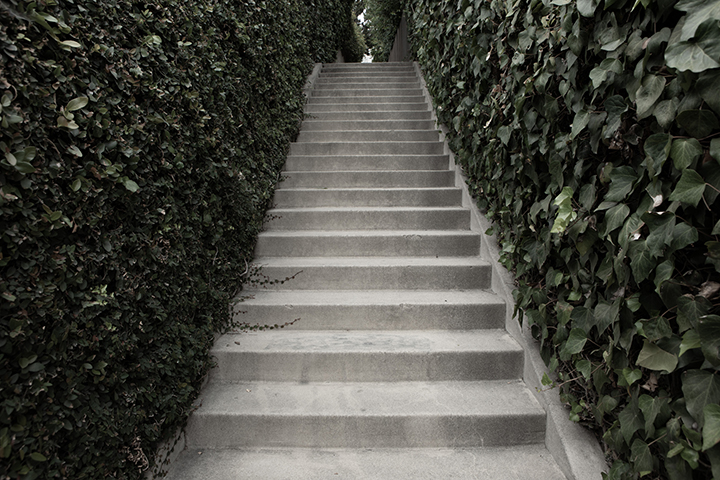
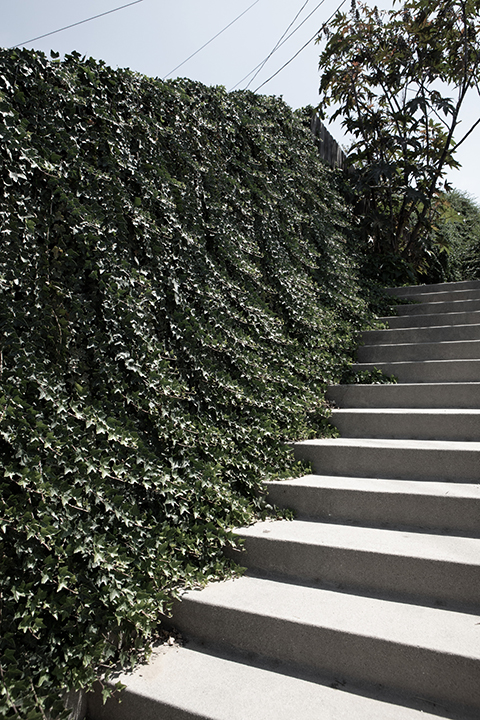
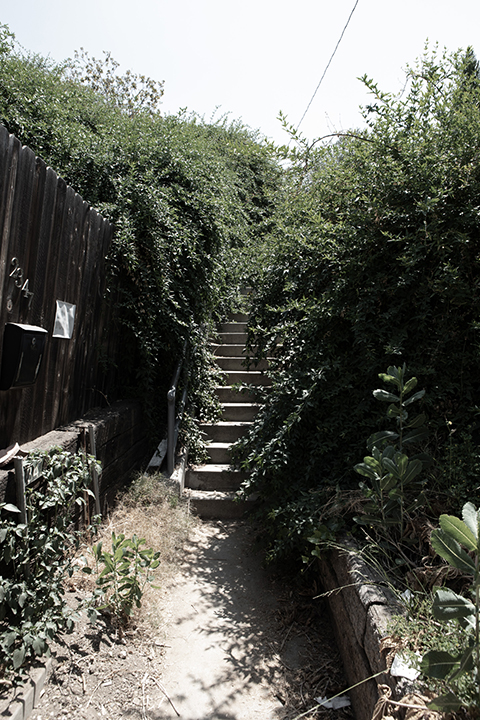
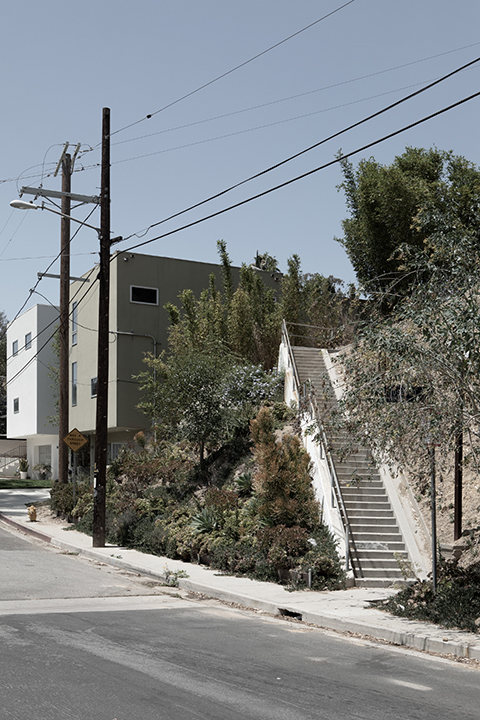
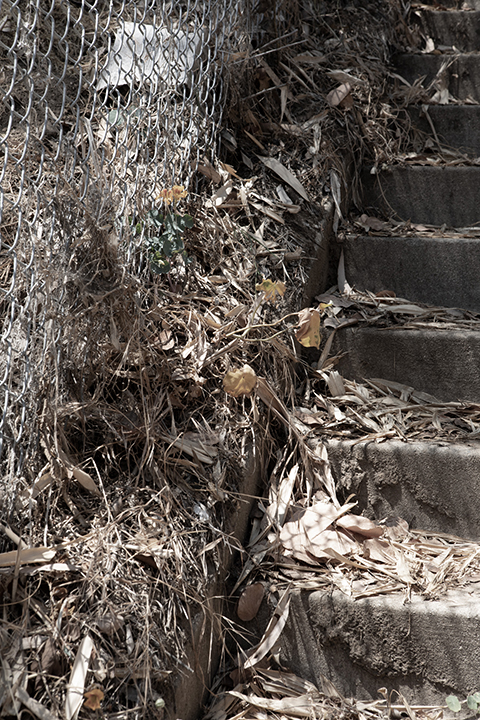
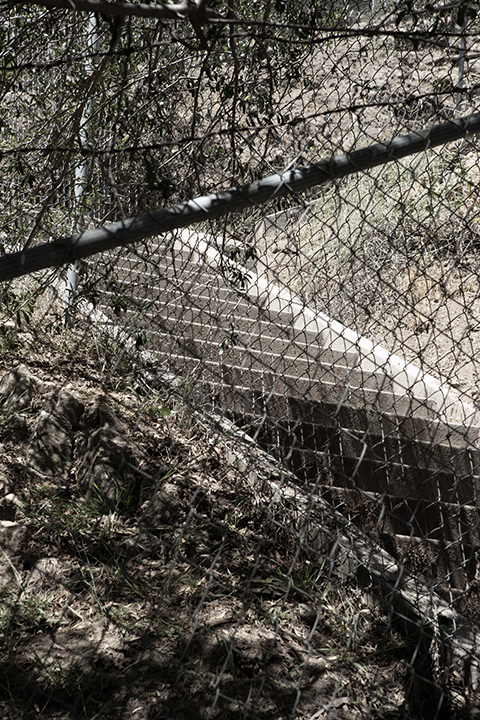
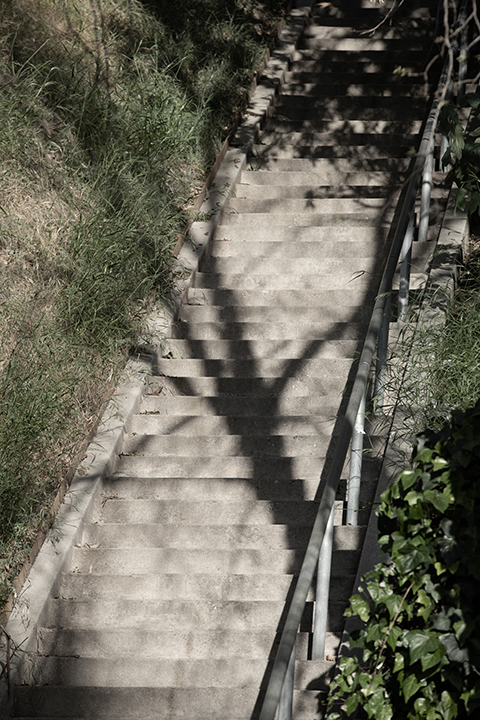
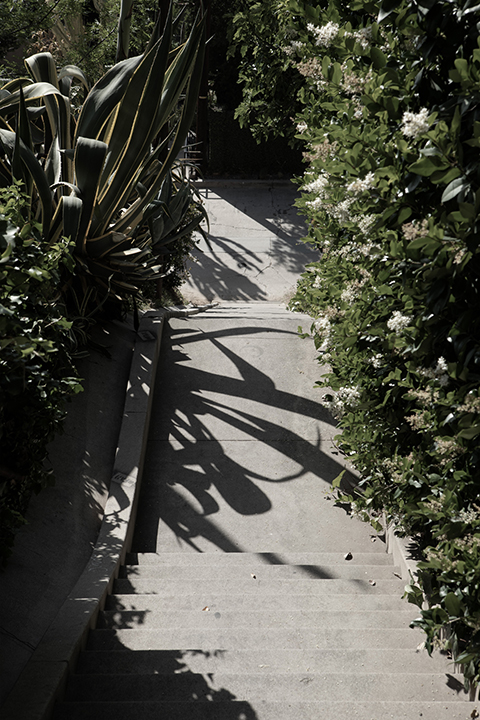
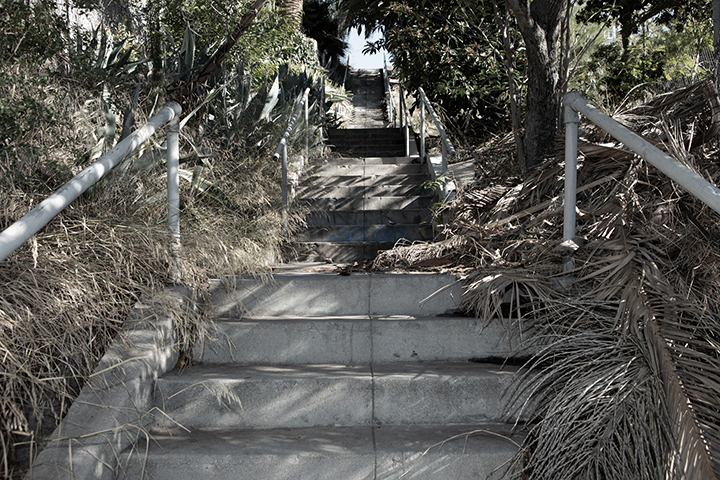
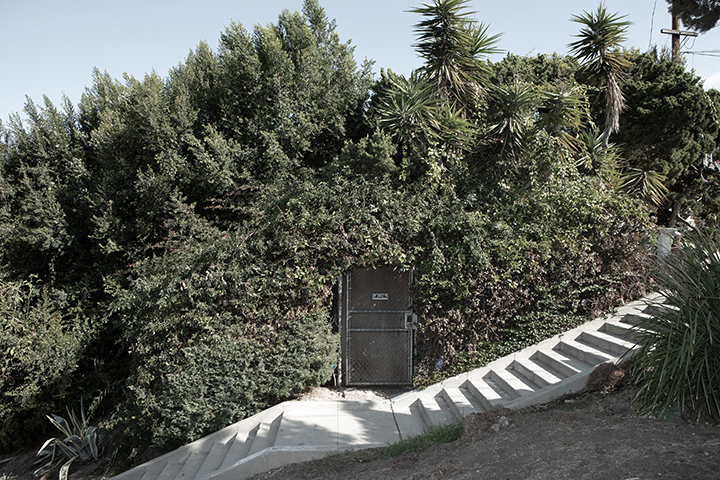
FEATURE DATES - DECEMBER, 2022 - MAY, 2023
Ten highly talented photographers are featured here for the 2022-2023 issue of Portfolio Platform. Portfolio Platform provides the focus of a streamlined online presence providing the opportunity for photographers to showcase a portfolio of photographic work prominently. The portfolios are available for patrons of the gallery to go online and view, learn about the photographers and their work through the images and biographies and artist statments, and have the opportunity to purchase photographs.
PORTFOLIO PLATFORM 2022 - 2023
FEATURED ARTISTS:
Douglas Hill, Los Angeles, CA;
Cindy Kontis, Owings Mills, MD;
Jaimie Ladysh, College Station, TX;
Eric Law, Berkley, MI;
Dominic Lippillo, Starkville, MS;
Rebecca Miller, Springfield, MO;
Fern Nesson, Cambridge, MA;
Nancy Rosene, Valparaiso, IN;
Jennifer Scavone, Darion, IL;
Leah Schrententhaler, Milwaukee, WI.
Douglas Hill
"Muted Stares"
So much of Douglas Hill's work has been dedicated to finding a way to define environments and the structures and objects that occupy them. This has often meant suppressing his personal point of view in favor of an apparently objective one, the traditional role of the documentarian. This is a false premise at best. Every decision that goes into making even the most clinical photographic rendering of a building, for instance, requires that subjective decisions be made. Angle of view, camera height, what's included in the frame, time of day and time of year, which determine the angle of sun, weather conditions, and so forth all go into determining what a photograph will look like. Less tangible, though, are the frame of mind of the photographer at the time of exposure, and their emotional responses to what they're confronted with. With the series Muted Stares, Douglas has attempted to acknowledge what it felt like to be in these very specific places. By working in this manner he has come much closer to experiencing what drew him to the medium in the first place, leaving himself vulnerable to the anticipation of not knowing what lies beyond the next step of the staircase or turn of the path: the uncertainty of the outcome each time the shutter is released.
In the 1920's a network of concrete staircases were built into the myriad hillsides of the Los Angeles district of Silver Lake and Echo Park during their development as residential neighborhoods. All but a couple of the staircases are still accessible to the public around the clock as they were originally intended. Douglas lived amidst these staircases for over 40 years, and yet has only had a marginal awareness of the extent of their existence for most of that time. When the pandemic descended upon all of us in 2020, like many, his daily routines shifted dramatically. When it was clear he'd go stir-crazy without getting more exercise he resolved to walk more. A lot more. There are some 70 or so staircases within a two mile radius of his house ranging from a few steps to hundreds in some cases. The one with which he's the most familiar is seven houses from his front door and is 111 steps punctuated by four landings.
Douglas Hill was born to Canadian parents in London, England in 1950. At the age of five he moved to New York where he lived until going to Los Angeles in 1968 where he still resides. He attainded U.S. citizenship in 1990.
Hill began making photographs in 1969. His work has been shown at The Gilb Museum, Arcadia, CA; Midwest Center for Photography, Wichita, KS; PH21 Gallery, Budapest, Hungary; Berlin Blue Gallery, Berlin, Germany; G. Ray Hawkins Gallery, Santa Monica; The International Center for Photography, New York; Kunsthaus, Zurich; Friends of Photography, Carmel, CA; Kunstgewerbe Museum, Zurich, Germany; Prairie State College, Chicago, IL; The Photography Place, Philadelphia, PA; Craig Krull Gallery, Santa Monica, CA; The Huntington, San Marino, CA. Publications include This Side of Paradise: Body & Landscape in Los Angeles Photography; Looking at Los Angeles; American Photo; Camera; 24 Hours in the Life of Los Angeles; The New Color.
His work is included in the collections of the Huntington, The Library of Congress, Center for Creative Photography, Center for Motion Picture Studies, Amon Carter Museum and participated in The Los Angeles Documentary Project commemorating the bicentennial of Los Angeles, funded by the National Endowment for the Arts.
Prints in the portfolio are inkjet prints, 11" X 17", 2022, $350 each.
Cindy Kontis
"From Eternity To Here"
In the series "From Eternity to Here" Cindy Kontis imagines taking steps back in time before computing, overpopulation and competition generated a starving planet. Cindy retreats from the crowd to embed in nature and open spaces, in distances challenging her camera's capture and the viewer's ability to see her, simply an element of nature, in the now.
As trust and communal belonging becomes increasingly fraught, humans parse life into quantifiable commodities, extricating themselves from the web of nature and all living things into which they were born. Metrics of acquisition, fantasies of power, and winning competitions to be anointed the best formulate identity and success. The conscious mind is taxed, left with less insight into why we do what we do. The race compromises true sense of self, a state of being requiring attention and focus. We stand nearly blind in face of the impace of our behavior.
Like stars in recent satallite images seen at distances billions of years ago in time, in the images comprising this series "From Eternity to Here," Cindy becomes a time traveler, perhaps more wise, already different than the image of her on her camera's sensor. In what the viewer sees she was small, confident and enduring in communion with the towering forest, vast horizons and indefinite colonies of infinitesimal and imperceptible being living (with) in open land. Cindy was grateful to run free and dream in their presence and she now fears their loss.
Cindy Kontis' work explores family history and memory in the face of evolving technologies. With a BA Degree in Psychology and Education, and an Urban Planning Master's Degree, her early photography generated solo traveling photography shows. Konits received a full merit scholarship to Maryland Institute College of Art MFA program, then became Adjunct Associate professor, Stevenson University MD, teaching Video Art, Darkroom and Digital Photography. In 2011 Konits began a full-time studio based practice. She was selected 25 Best in Fine Art and Photography in 2019, 2020 and 2021 by the Creative Quarterly Journal of Art & Design, and was awaraded First Prize in The Photo Review 2021 Competition. She won awards in numerous categories in the 15th, 16th, and 17th Julia Cameron and Pollux awards. Her work has appeared in The In-Between Journal of New Media Photography, PhotoNostrum, and Shots magazines. She is represented by The Commotion Virtual Salon, Vancouver B.C.
Prints in the portfolio are archival pigment prints, 18" X 24", 2022, $650 - $800 each.
Jaimie Ladysh
"Where Land Meets Sea"
Rushing onto the land, then retreating into the sea, tides are at once both constant and ever-changing. The water shapes the shorelines into a surprising and beautiful place of discovery. As a Thalassophile, a lover of the sea: Jaimie longs for the eternally rhythmic and mesmerizing sounds at the water's edge and draws healing strength from their energy. Wandering the beaches, berms, and beyond, she searches for revelations in the natural shorelines. Focusing on natural environments, looking for mystery, Jaimie is creating the visualization of her dreams. In order to better convey the mystical, she prints her images on archival hot press natural and Japanese papers. She embellishes with hand-colored oil pencils, pan and stick dry pastels, and other media. In building layers of color, Jaimie tries to reflect the deep and ageless stirrings of the sea.
Jaimie is a lens based interdisciplinary artist. Her work is rooted in place in a spiritual way within the natural world. She also studies nature through still life botanicals. Currently exploring digital with edited and some composited images, she prints the images on special papers, then further manipulates with hand-coloring, painting, and sometimes encaustics. The results are often described as ethereal. Whether representational or abstract, she seeks the little mysteries found when light models on forms and color. Jaimie has long used photography of traditional film and silver gelatin, Cyanotype, Van Dyke, Photograms, photo manipulations, infrared, and other alternative processes. As a fine art major, she began exploring hand tinting, coloring, and painting of photographs with oils, pencils, and water based media. She used 35mm, 2 1/4 X 2 1/4, and toy cameras. Her work is archival; made with longevity. Her work has been in many galleries, press, and venues. Pieces are in private, public, and corporate collections. All pieces are in limited editions of 15 in one or more sizes. Jaimie was born in Ohio, and has lived in a variety of places in many states, The Netherlands, and Gabon in Africa. She earned a BFA from University of Montana with a certificate to teach. She has been an art educator in Houston for 30 years.
Prints in the portfolio are hand colored inkjet prints, 12" X 18", $350 each.
Eric Law
"Captured on Film"
The photographs in this "Captured on Film" project are an intimate look at the old, discarded and rusty things. Each image conveys a sense of the subject's personality through individual portraits, as well as in the interactions of multiple objects in the group photos. Study the "body language" and consider what it conveys about the object and the conversations that are taking place.
The photos are captured on traditional black and white film using a pinhole camera and hand-printed on silver-based paper. Eric loves working with film and the precision it demands to achieve a desired result. Ther's no fixing is later in the computer. A pinhole camera, which has no lens — only a tiny hole through which light is projected onto the film, is the earliest form of camera used by photographers. It adds a unique softness to the images, which enhances the personality of the objects.
Eric is delighted to be able to share his creative viewpoint using a completely analog approach.
Eric Law is an accomplished fine art and commercial photographer. Late in a career in business, he discovered a passion for the fine art photograph and, through extensive personal study, developed his skills and personal vision as a photographer. His work has been exhibited in many galleries in the Detroit area, as well as nationally and internationally, and they are in several private collections. He is a member of Professional Photographers of America and works from his studio in Hazel Park, Michigan.
Prints in the portfolio are silver prints, 14" X 16, 16" x 20", and 22 " X 26", $250, $300 and $375 each.
Dominic Lippillo
"Ellipses"
Throughout this body of work, Dominic is exploring domestic interiors and the landscape in response to a new relationship with the everyday that emerged due to the COVID-19 pandemic. In doing so, he is capturing subjects that are ubiquitous and personal as he investigates fleeting aspects of everyday life that can be difficult to see and appreciate.
The open-ended elliptical images in this series of photographs, which borrow the format of the circular snapshots made with the early Kodak camera, act as portals that invite the viewer to peer into another person's world. Subsequently, like the ellipsis used in a sentence to omit information that does not seem relevant, the elliptical cropping of these images abbreviates the subjects as he focuses on the information that seems important to him in the present moment.
While making this work, Dominic forced himself to be observant and attentive. It is easy to become overwhelmed by life, to get trapped in despair, and to retreat into one's own fears. He reminds himself that he is not alone, to not take moments that seem insignificant for granted, and to remain curious about the world, even if it is his own backyard. Although the subjects may seem random, they confirm there is significance in the small things and our mundane experiences have meaning.
During his childhood Dominic Lippillo's family rented a considerable number of house. Every time they moved to a new house he would wonder about the uncountable past experiences that may be embedded within the walls, how the former inhabitants used the space, and how their time in this space affected their lives. As a result, he became fascinated by the residual essence of the former inhabitants that still lingered and the remnants they unintentionally left behind that seemed to be discarded, forgotten, or unwanted.
Throughout his projects Lippillo often photographs in or around his personal surroundings in an attempt to understand the spaces and the people who once lived there. In doing so, he creates photographs of experiences that exist in his mind but not in reality. He aims to create and capture fictitious moments, while subsequently calling into question the legitimacy of photographic representation by employing a practice, which utilizes staged photography, found vernacular photographs, and digital composite imagery in which he embellishes the depicted information through a process of addition and deletion.
His photographs are included in the permanant collections of The Museum of Photographic Art; The Museum of Fine Arts, Houston; The University of Alabama, Tuscaloosa; and the University of North Dakota. Publications include Some Recent Findings, Don't Take Pictures, Mono Chroma, Exposure, Daily Serving, The Eye of Photography, and the INPHA Annuals II and IV. Grants and Awards include: South Arts Fellowship (2018), Finalist Critical Mass Top 200 (2017 & 2016), Mississippi Arts Commission Visual Artist Fellowship (2016), Mississippi Arts Commission Artist Mini-grants (2010, 2013, 2014, and 2018), and the Mississippi State University Faculty Research Award (2019 & 2013). Lippillo earned his MFA Degree in Photography from Ohio University (2009) and a BFA Degree in Photography from Youngstown State University (2005), and is an Associate Professor of Photography at Mississippi State University.
Prints in the portfolio are inkjet prints, 12" elliptical images, 2021, $850 each.
Rebecca Miller
When will our national trgedy strike you or me? Or has it already done so?
We are a country of violence. The question is, do we want to remain a nation of bloodshed or seek a better alternative? Brutality can be perpetuated or broken. It is our choice to balance the desire to protect ourselves and those we love with the freedom to limit the insanity that has become guns in America.
How do you choose? Columbine, Paducah, Aurora, Sandy Hook, Charleston, Parkland, Las Vegas, Orlando, buffalo, Uvalde, Highland Park... The list goes on and on. This work is about the power of the people to stand up and demand change.
These images were photographed at the 2022 March for Our Lives protest in Washington D.C. just weeks after the senseless mass shottings in Buffalo and Uvalde and weeks before Highland Park. When will it be your city that suffers a mass shooting and when will there be enough senseless acts to make real change?
Rebecca Miller is a Professor of Photography at Drury University in Springfield, MO. She is interested in documenting how and why people publicly protest in the United States and has photographed both sides of numerous demonstrations including Health Care Reform, Trump rallies, March for Our Lives/Gun Control, Black Lives Matter, and Abortion Rights. Originally from south Florida, Miller holds a Bachelor of Fine Arts Degree from the Kansas City Art Institute and a Master of Fine Arts Degree from Florida State University.
Prints in the portfolio are archival pigment prints, 10" X 10", 2022, $150 each.
Fern Nesson
"Machine Art"
In 1934, the Museum of Modern Art presented "Machine Art," a path-breaking exhibition comprised of over one thousand mass-produced machine-made objects. This was new. For the first time, machines were treated as art.
Machine Art was curated by Philip Johnson, then a young architect. He designed the installation as well. In 1934, MOMA was housed in a 19th Century brownstone. Johnson transformed the space using screens to re-orient the floor plan and he treated the machines as sculptures. MOMA's exhibit was a smash success and it inspired many similar exhibits in the decades that followed.
The machine as art presented the same challenge to Johnson as does any other subject: how to create meaning? For Johnson, meaning came through context. By installing machine-made objects in unique and interesting relationships Johnson conveyed his message:
Art is not dead. The machine age has not destroyed it.
In fact, it is art that has conquered the machine.
Ninety years later, Fern Nesson's subject is also machines but her meaning is different. Her message is 'transcendence.' Abstract photographs that are alive with energy can help us to face change, loss, even death; they are our path to immortality.
Some would say that photography cannot create living works of art. Roland Barthes, for example, argued that all photographs are images of death:
A photograph is a witness, but a witness of what is no more.
— a record of what has been.
Barthes, Camera Lucida, p. 4, 12
But Barthes was wrong. It is not true that the camera can record only death. As Einstein showed us, the equation runs two ways: energy can transform into mass — light and a camera can produce a photograph — but mass can transform into energy as well. Photographs can create their own energy, not merely memorialize a past moment.
An abstract energetic image that embodies movement and flow transcends its inanimate form. It lives on, resonating with the past, celebrating the present, pointing to the future, embodying the universal, iconically representing the eternal.
Machines are the perfect subjects for dynamic photographs. Photographed abstractly, they release their energy to us, instilling us with courage to face the future without fear. Not only do they transcend their more earthly pursuits, we do as well.
Fern L. Nesson is a fine art photographer who lives in Cambridge, Massachusetts. She received her MFA in Photography from Maine Media College (2018), a J.D. from Harvard Law School (1971), and an M.A. in American History from Brandeis University (1987).
Fern's spare photographs distill reality to its essence, highlighting its energy through placement of forms and the use of abstraction. Her photographs have been exhibited in solo exhibitions at Les Rencontres de la Photographie in Arles, France, the MIT Museum, the MetaLab at Harvard, the Beacon Gallery in Boston, the Auburn Gallery in Los Angeles and on artsy.net. Additionally, her work has been selected for juried exhibitions at galleries and museums in Boston, New York, Rome, Budapest, Los Angeles, Middlebury, Vt., Wichita, and Rockport, Maine.
Fern's photobook, Signet of Eternity, was the recipient of the 10th Annual Photobooks Award and shown at the Davis-Orton Gallery (December 2019) and the Griffin Museum (2020). She is also a National Associate of The LivingNewDeal.org, for whom she writes a regular column of historical photo essays and a contributing editor to BonjourParis.com, writing photo essays on art and culture.
Prints in the portfolio are digital archival prints in limited edition of 24, 16" X 24" and 24" X 24", 2018 - 2022, $1,800 each.
Nancy Rosene
Earth, Water, Sky
Nancy Rosene rambles along, communes with nature, photographs here and there, and these things connect her with the earth, water and sky of her places.
This portfolio titled "Earth, Water, Sky" is a subset selection of images from on of the "places", the great Lake Michigan. Her work is examination of the Lake's upland and lowland forests, lake plains, clay bluffs, dune fields, rocky cliffs, and ridges and its sand and pebble shores. It is exploration of the effect of elements on the fragile ever changing magnificence of this landscape.
Nancy Rosene is a contemporary fine art photographer living in Northwest Indiana. Nancy captures song birds, botanicals, water and landscapes and brings them to life using digital collage-like layers of brush strokes and textures. In the studio, she is a story teller with images that will take you o a visual journey,
A background in Graphic Design stimulated Nancy's imagination and offered her the opportunity to expand perception of form and design. In retirement she began studies in Fine Art Photography at the Chicago Botanic Garden. During that time, her interest in capturing images digitally emerged and grew eventually earning her a Certificate of Merit, Fine Art Track and a Certificate of Merit, Master Track.
Nancy's work has been selected for juried exhibitions at the San Francisco Center for the Book, San Francisco Library, Midwest Center for Photography, Art Barn, A Smith Gallery and by South Shore Arts at the Center for Visual and Performing Arts. Her work has been published in Chicagoland Gardening magazine.
Prints in the portfolio are digital Inkjet prints.
Jennifer Scavone
As long as Jennifer Scavone can remember, she has loved to draw; using line and value to express her ideas has captivated her. Her preferred drawing media is pencil, ink wash and charcoal.
It was not until taking a course in traditional black and white photography as an undergraduate that she discovered photography is "drawing with light". Finally, she understood why British scientist Sir John Herschel in 1839 coined the term "photography", which was literally derived from the Greek phos "light", and graphé (drawing or writing) meaning a process of "drawing with light".
In photography, Jennifer delighted in the joy of composing well-designed images by looking through the camera's viewfinder and drawing with light in the darkroom by burning and dodging the light emanating from the photo enlargers onto emulsified photographic paper. This magical and mysterious darkroom process provided creative exploration but required patience because drawing with light could not be experienced immediately due to the time delay required of the darkroom chemical process.
After Jennifer graduated, she no longer had access to a darkroom and therefore was unable to continue her darkroom explorations but continued to take photoraphs that were then commercially processed. Much of her time that was previously devoted to the darkroom is now able to be spent drawing and painting.
Jennifer D. Scavone earned her M. A Degree in Painting from Northern Illinois University, as well as a M.A. Degree in Educational Administration and Leadership and a B.A. Degree in Art with an emphasis in drawing and painting and a minor in Education from St. Xavier University.
At a number of colleges and universities throughout the Chicago suburbs, Ms. Scavone teaches a variety of courses in Fine Arts that range from studio art courses (Digital Photography, Drawing I and II, Advanced Drawing, Watercolor Painting, Silkscreen Printmaking, and Color) to survey courses in art and architectural history, art appreciation as well as courses in Art Criticism, Senior Exhibition, and an arts course for scholars' students. In addition, she has served as Feature Editor and Faculty Advisor for two different literary arts publications. Ms. Scavone is regularly invited to serve as guest lecturer on topics in history and architectural history.
The depth and breadth of Jennifers' art administration career is illustrated by her interdisciplinary program design and global partnership development, having worked with a variety of visiting artists, arts organizations, and community outreach programs. Employing her background in art administration and art education while serving as Art Department Chairperson in a suburban High School, Ms. Scavone taught a myriad of art courses specializing in Painting, Drawing and Advanced Placement Art History, and developmental art education courses in addition to planning Interdisciplinary Arts programs.
In addition to having served as a board member of the Illinois Art Education Association, Jennifer continues to present curriculum writing seminars, mentor teachers, serve as an art show juror and exhibit her work throughout the Midwest.
Prints in the portfolio are digital Inkjet prints, various sizes, 2018 - 2022, $750 each.
Leah Schrententhaler
"Aloha From Hawaii"
Paradise is a common word that is associated with Leah's home state of Hawaii. It is a concept that is used to sell an experience. The images of Hawaii that grace postcards are magical landscapes that promise specific, unique experiences, and feelings when you do visit these famous sites. On one side of the postcards there would be an image of paradise and on the other side text that describes family members and friends' encounters of the Hawaiian paradise. The images of the Hawaiian paradise would spark the imagination and entice more visitors to the island.
The series "Aloha From Hawaii" consists of postcards from the 20th century containing a variety of iconic Hawaii landscapes. Each postcard recounts a visitor's unique experience of their Hawaii vacation. The seemingly innocent words on these postcards have been etched into the scene, landscape, or the experience of the tourist. While the elegant writing may recount fleeting memories and experiences the writing creates indelible marks on the landscape. The etched words allude to the destruction of the landscape through tourism. These words become the footprints of the tourists that create gaps in these natural areas.
Postcard images of Hawaii sell the land of paradise and adventure. But humans' love for this promised land has literally loved the landscape to death through exploitation. The postcards innocently written with love have slowly destroyed the fragile paradise of Hawaii.
Leah Schrententhaler was born and raised in Hawaii. She holds a BFA Degree and MA Degree in Art Education and an MFA in Photography. Through her art practice, her research focuses on her home state of Hawaii and presents a connection between land and materiality. Her work has been displayed and published nationally and internationally. Most recently she has been named in Lens Culture's Emerging Talents of 2018, awarded 2nd in Sony World Photography Awards, and was also awarded the Rhonda Wilson Award from Klompching Gallery in FRESH2019. In 2020 she was awarded the Mary L. Nohl for emerging artists. She currently lives and teaches in Wisconsin.
Prints in the portfolio are digital archival prints of Laser Etched Postcards, 4" X 6", 2022, $500 each.
